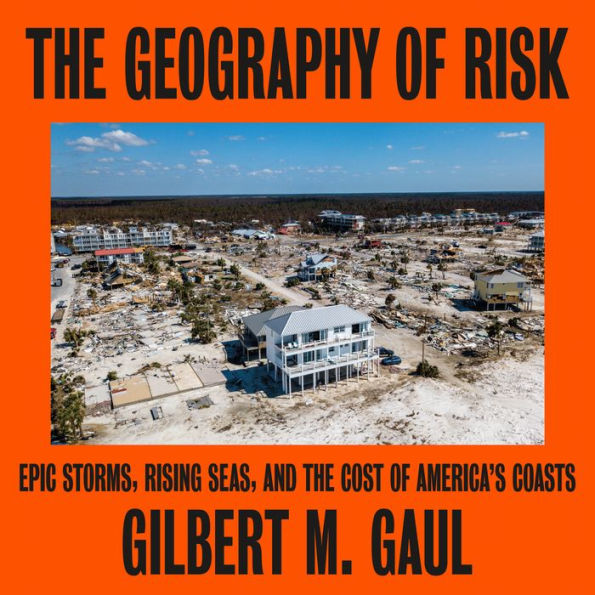…[a] carefully researched and eye-opening book.
This program includes an introduction and epilogue read by the author.
This century has seen the costliest hurricanes in U.S. history-but who bears the brunt of these monster storms?
Consider this: Five of the most expensive hurricanes in history have made landfall since 2005: Katrina ($160 billion), Ike ($40 billion), Sandy ($72 billion), Harvey ($125 billion), and Maria ($90 billion). With more property than ever in harm's way, and the planet and oceans warming dangerously, it won't be long before we see a $250 billion hurricane. Why? Because Americans have built $3 trillion worth of property in some of the riskiest places on earth: barrier islands and coastal floodplains. And they have been encouraged to do so by what Gilbert M. Gaul reveals in The Geography of Risk to be a confounding array of federal subsidies, tax breaks, low-interest loans, grants, and government flood insurance that shift the risk of life at the beach from private investors to public taxpayers, radically distorting common notions of risk.
These federal incentives, Gaul argues, have resulted in one of the worst planning failures in American history, and the costs to taxpayers are reaching unsustainable levels. We have become responsible for a shocking array of coastal amenities: new roads, bridges, buildings, streetlights, tennis courts, marinas, gazebos, and even spoiled food after hurricanes. The Geography of Risk will forever change the way you think about the coasts, from the clash between economic interests and nature, to the heated politics of regulators and developers.
This program includes an introduction and epilogue read by the author.
This century has seen the costliest hurricanes in U.S. history-but who bears the brunt of these monster storms?
Consider this: Five of the most expensive hurricanes in history have made landfall since 2005: Katrina ($160 billion), Ike ($40 billion), Sandy ($72 billion), Harvey ($125 billion), and Maria ($90 billion). With more property than ever in harm's way, and the planet and oceans warming dangerously, it won't be long before we see a $250 billion hurricane. Why? Because Americans have built $3 trillion worth of property in some of the riskiest places on earth: barrier islands and coastal floodplains. And they have been encouraged to do so by what Gilbert M. Gaul reveals in The Geography of Risk to be a confounding array of federal subsidies, tax breaks, low-interest loans, grants, and government flood insurance that shift the risk of life at the beach from private investors to public taxpayers, radically distorting common notions of risk.
These federal incentives, Gaul argues, have resulted in one of the worst planning failures in American history, and the costs to taxpayers are reaching unsustainable levels. We have become responsible for a shocking array of coastal amenities: new roads, bridges, buildings, streetlights, tennis courts, marinas, gazebos, and even spoiled food after hurricanes. The Geography of Risk will forever change the way you think about the coasts, from the clash between economic interests and nature, to the heated politics of regulators and developers.

The Geography of Risk: Epic Storms, Rising Seas, and the Cost of America's Coasts

The Geography of Risk: Epic Storms, Rising Seas, and the Cost of America's Coasts
FREE
with a B&N Audiobooks Subscription

Editorial Reviews
Product Details
| BN ID: | 2940169227277 |
|---|---|
| Publisher: | Macmillan Audio |
| Publication date: | 09/03/2019 |
| Edition description: | Unabridged |
Videos


